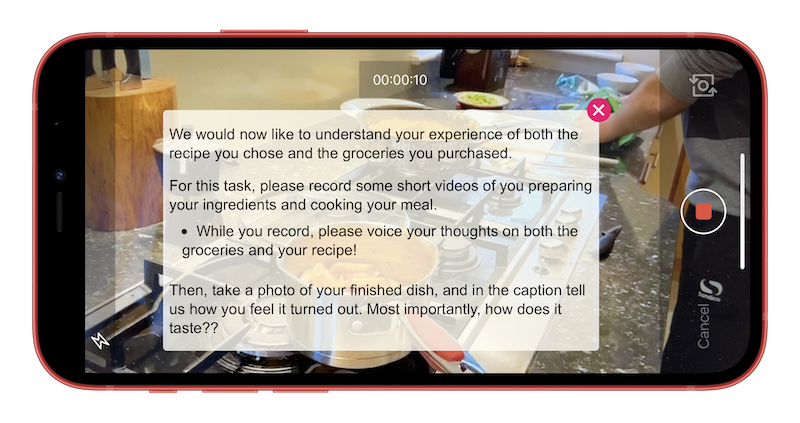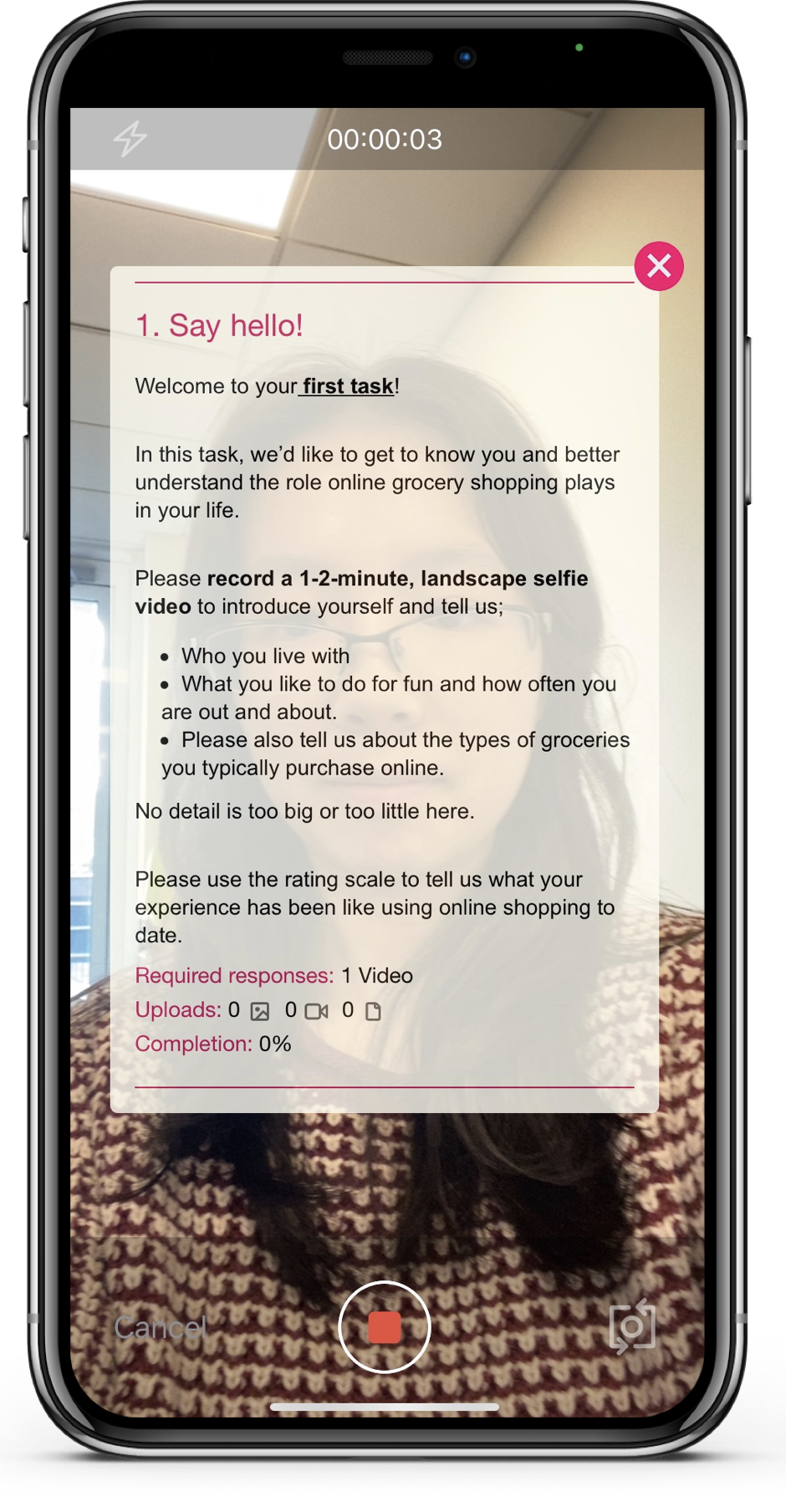Higher Impact Video Research with Digital Ethnography
Doing More Research via Mobile
We’ve seen some interesting trends in how our customers have evolved their usage of Indeemo in the past months. One of the more prominent trends is that projects are becoming more intensive as more and more clients transition to digital ethnography (also known as mobile ethnography).
The intensity of research has increased in two ways:
1 - The number of tasks / projects is increasing as clients and researchers “work mobile harder” to capture omni-channel behaviours in one platform. We now frequently support projects with as many as 50 tasks or activities.
2 - As clients and researchers demand more from digital ethnography, the complexity / density of tasks has correspondingly increased. Pre-covid, tasks were typically “tweet sized” with 3-4 questions max. We now regularly see tasks with up to 10 questions.
Digital transformation means that omni-channel / digital journeys are becoming the norm for most brands. For omni-channel research, their platform of choice is increasingly mobile and their media of choice, video.
Why has Research become more Intensive?
We have observed two main reasons for the intensification of usage of digital ethnography by researchers.
The emergence of asynchronous qual research
Firstly, pre-covid, when doing exploratory research (or pre-tasking), briefs typically adopted a “less is more” approach to digital ethnography tasking. Keeping tasks succinct and open ended meant respondents were more likely to surprise you and increased the likelihood of capturing unexpected behaviours and “unknown unknowns”.
With the ability to meet respondents in-person and delve deeper into the insights surfaced using Digital Ethnography. Without the ability to meet respondents in context however, asynchronous approaches are now doing more of the “heavy lifting”.
2. The blending of exploratory research and usability testing
Secondly, we’ve seen a huge emergence in design research personas using Indeemo. UX Researchers, Experience Designers and Service Designers are increasingly adopting digital ethnography for both their primary research and, using mobile screen recording, usability or product testing.
To evolve with this rapid evolution, we are pleased to announce the following upgrades:
Do more Impactful Video Research
To cope with both the increased number of tasks per project and the increased density of questions / activities per task, respondents can now read their tasks while recording videos.
By tapping on the View Task List button in the camera, a semi transparent version of the Task List is seamlessly overlaid on the camera allowing respondents to concurrently read their task while recording their video.
This ensures that respondents stay on topic, answer every question accurately. This produces more reliable insights and more impactful outputs for the client.
Improved Respondent UX
As clients demand more from mobile, we are increasingly seeing tasks with up to 10 questions. This can be quite demanding on respondents.
Even though researchers advocate the advantage of an open ended, light touch approach to tasking, some clients insist on pseudo-survey style tasks.
To cope with this demand and improve the respondent user experience, we will be releasing the ability for respondents to view tasks while composing notes or adding captions to photos / videos.
This allows respondents to methodically work their way through dense, question heavy tasks with more ease and greater accuracy.
As clients, especially product managers, want more and more questions answered, this new capability means that you can more easily support their demands and maintain high completion rates.
Saving you Time
The biggest impact of these changes however is the amount of time it will save you.
Firstly, it will drastically cut down on the amount of “over and back” with the client that was historically required to optimise “survey style” briefs into a mobile ethnography format. Task intensive projects can now be programmed with less iteration and fielded with more confidence.
Secondly, it will reduce the amount of time you spend sending follow up probes to respondents who may have forgotten to answer a specific question in a video or note response. This is particularly powerful for dense tasks with multiple questions.
Finally, it will result in less time spent watching videos. Videos will be more succinct and to the point. Respondent uploads will be more impactful and as a result, the amount of time you spend in analysis will be significantly decreased.
Let us support you
If you’d like to learn more about the above updates or arrange a quick demo, please click on the contact us button below and we will get back to you ASAP.





